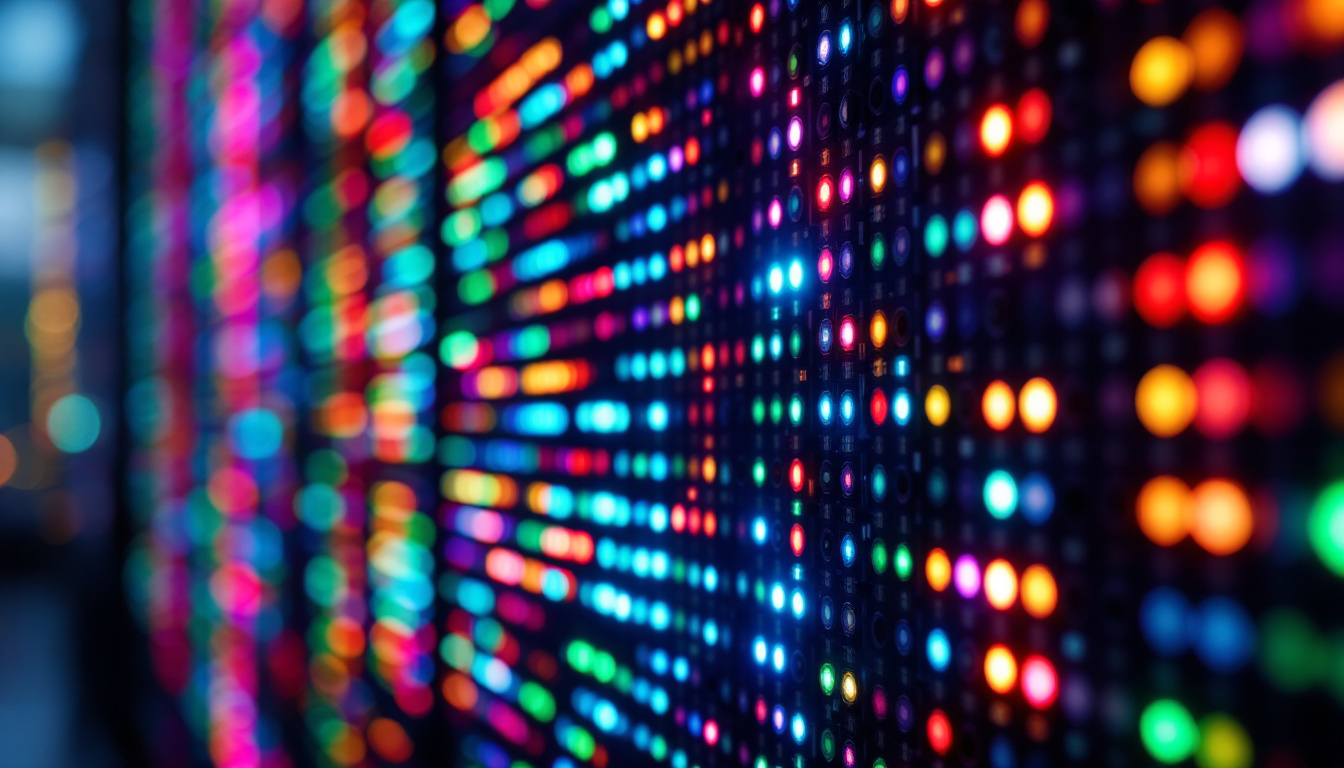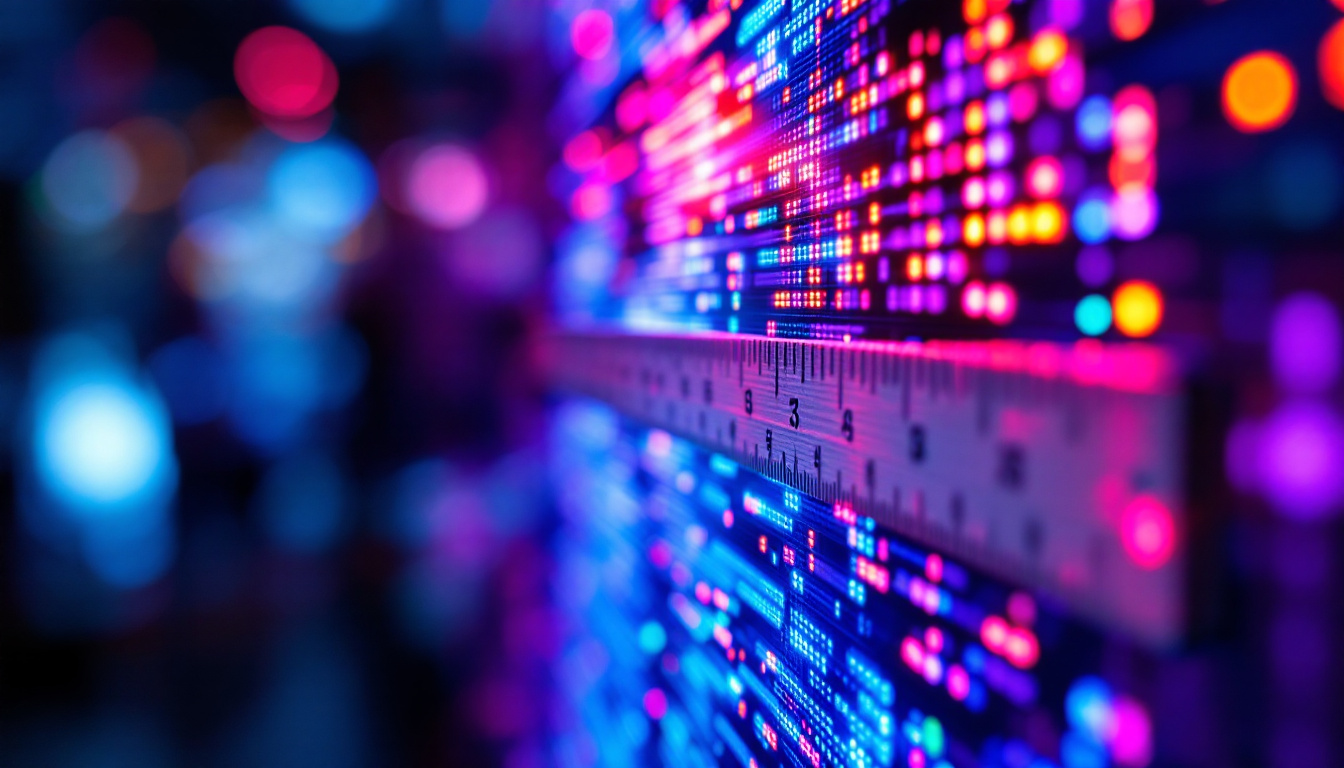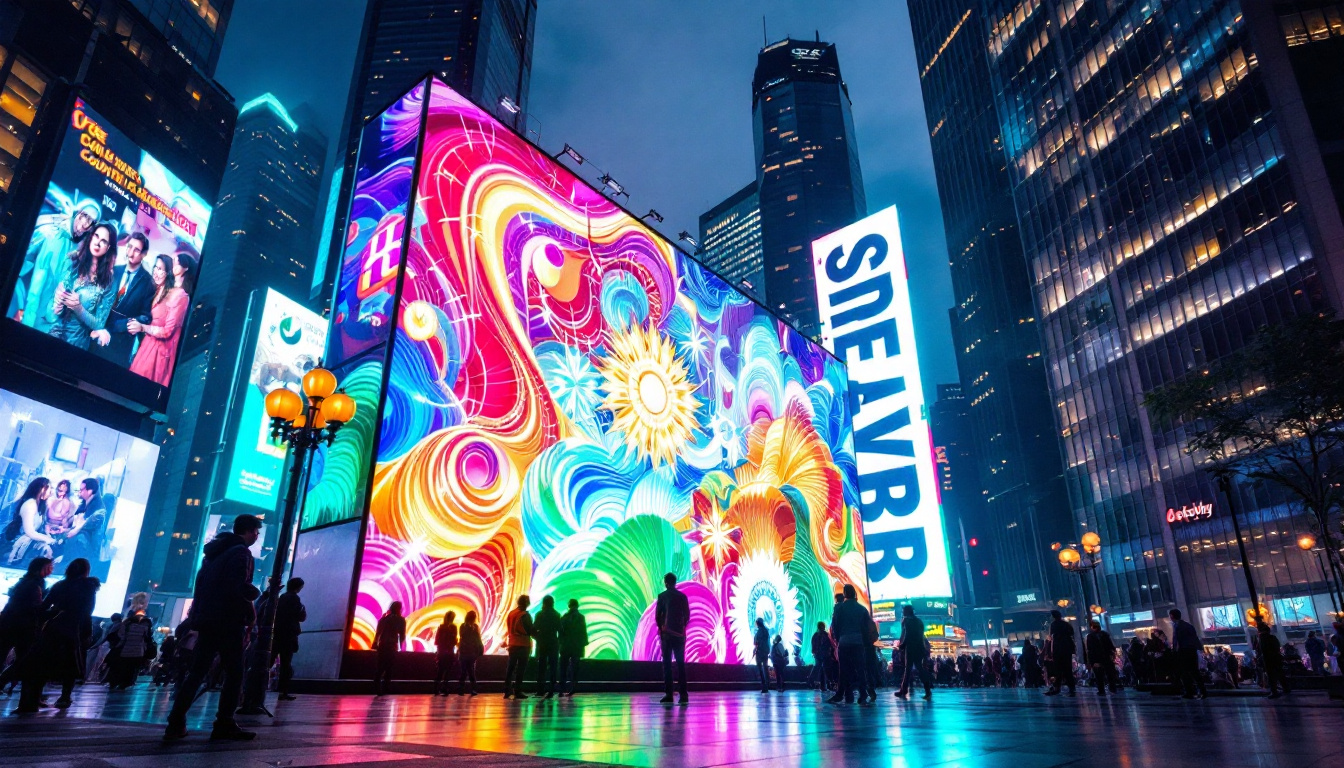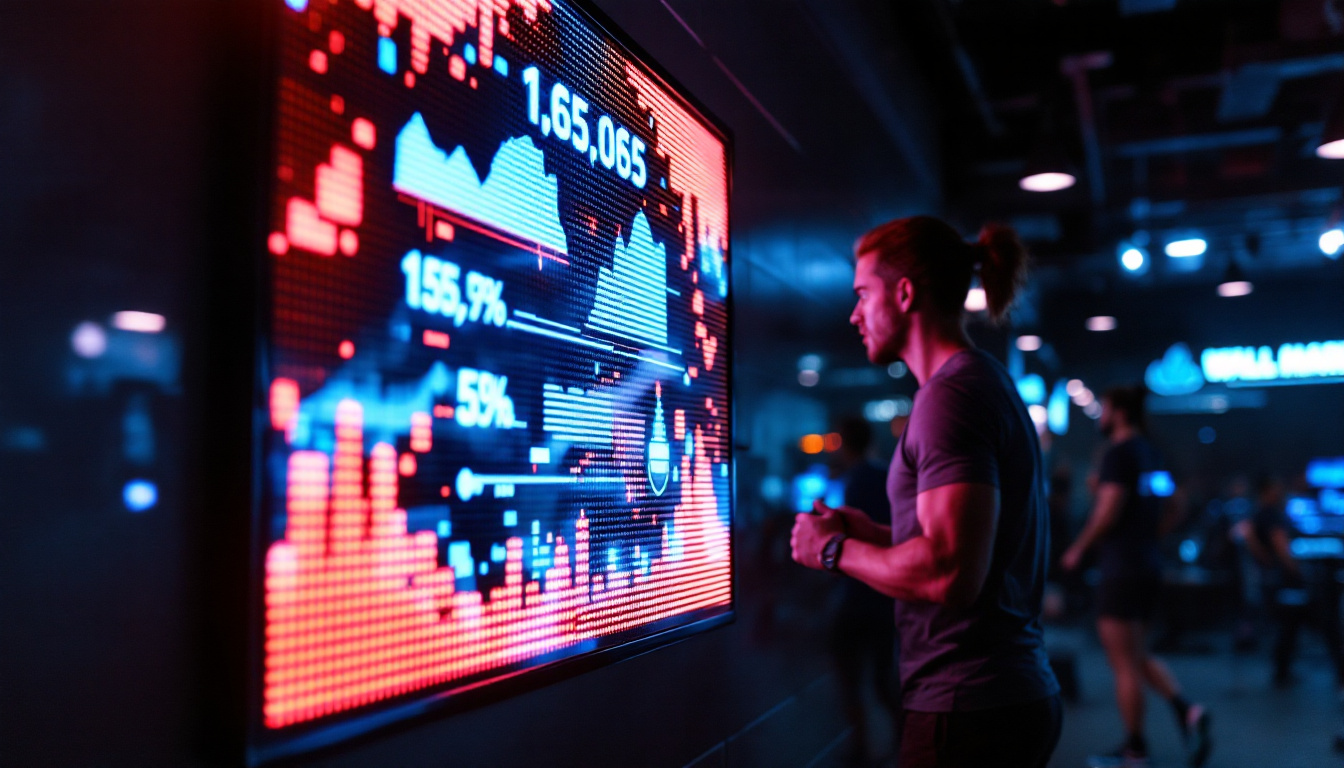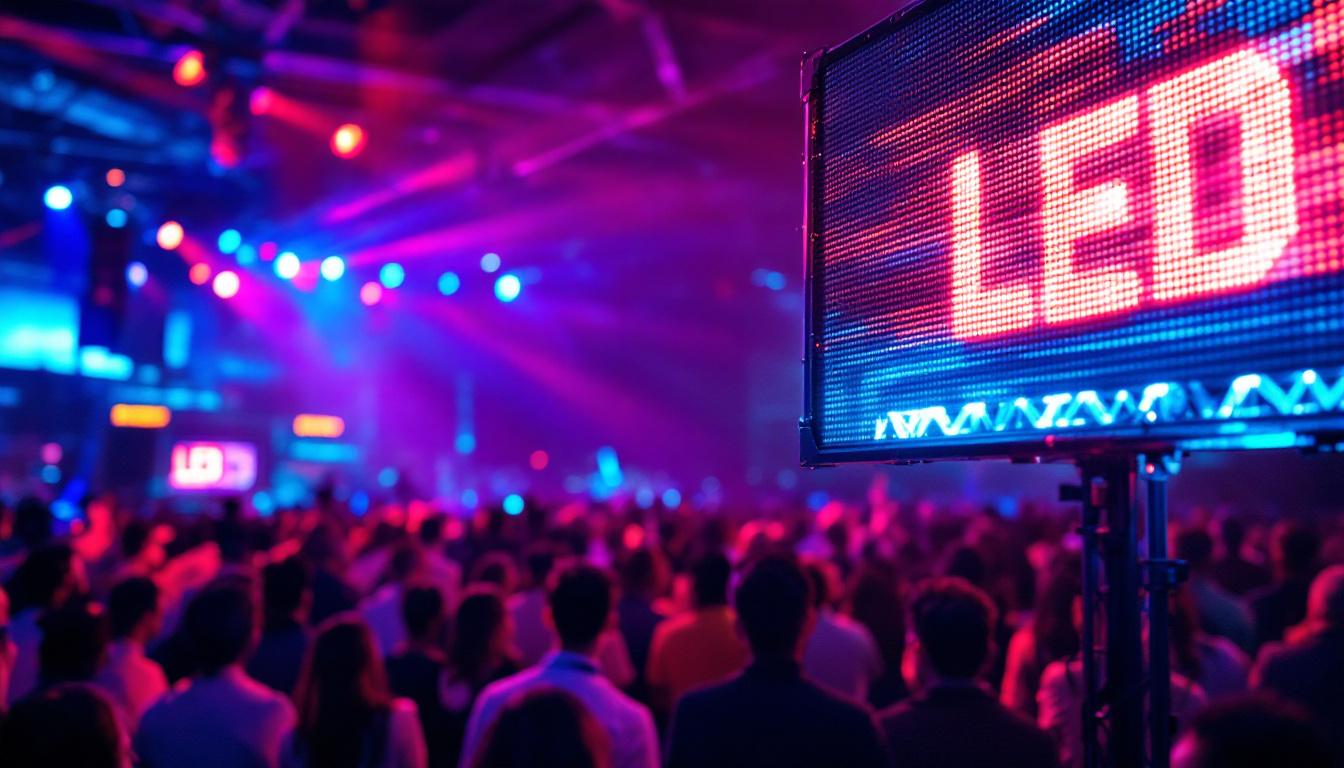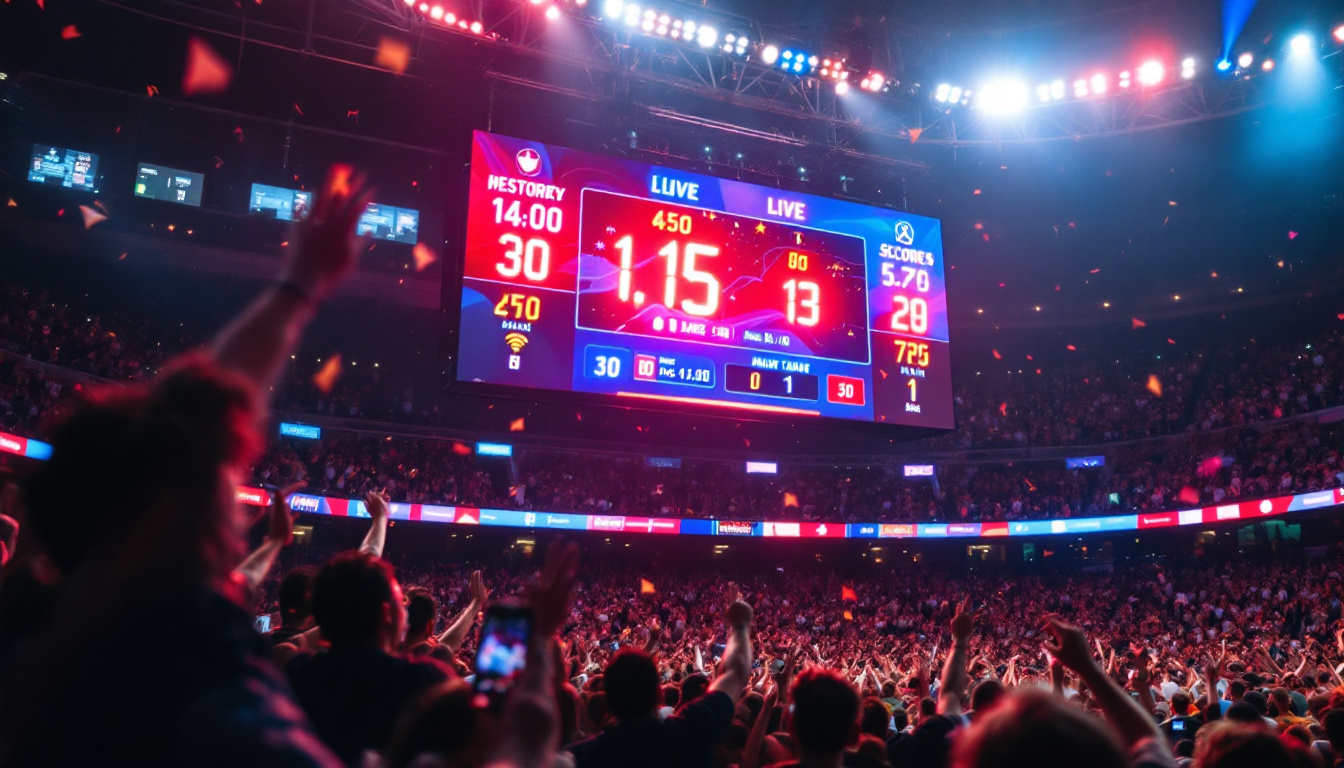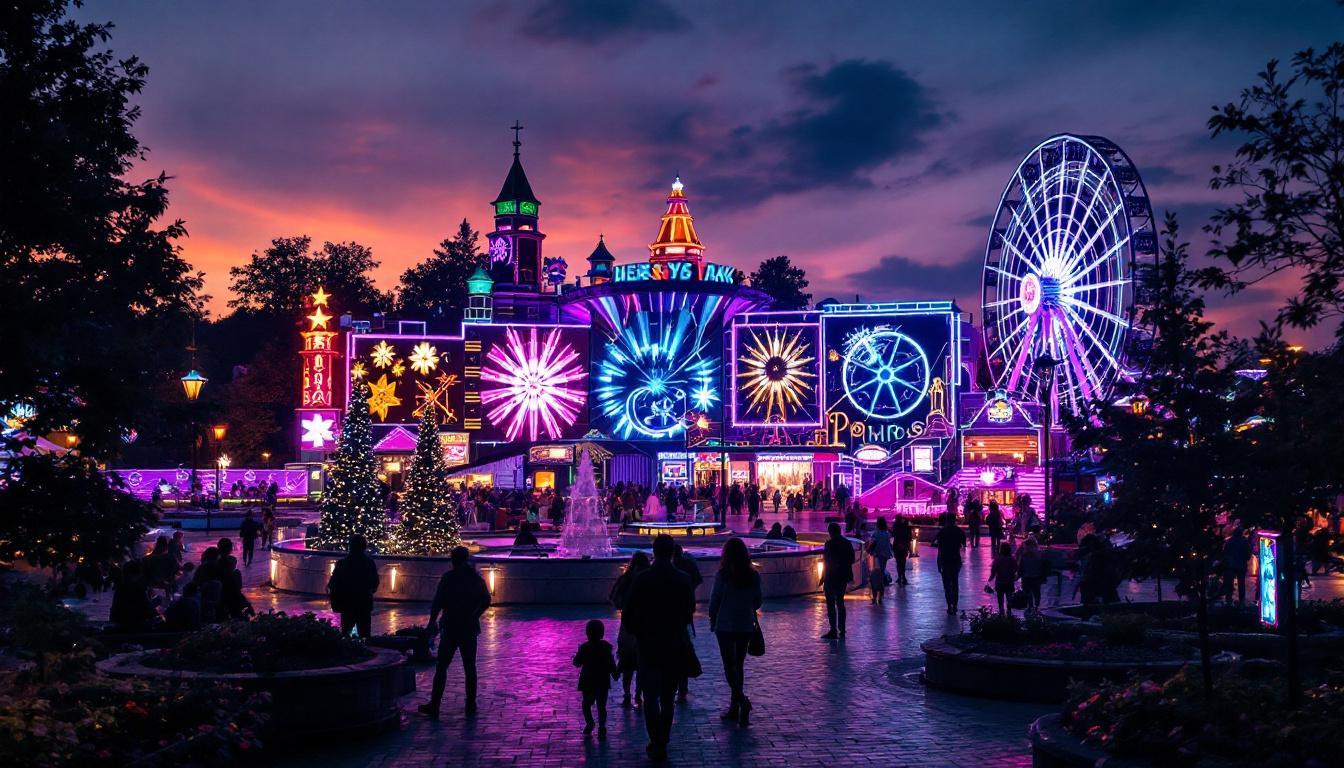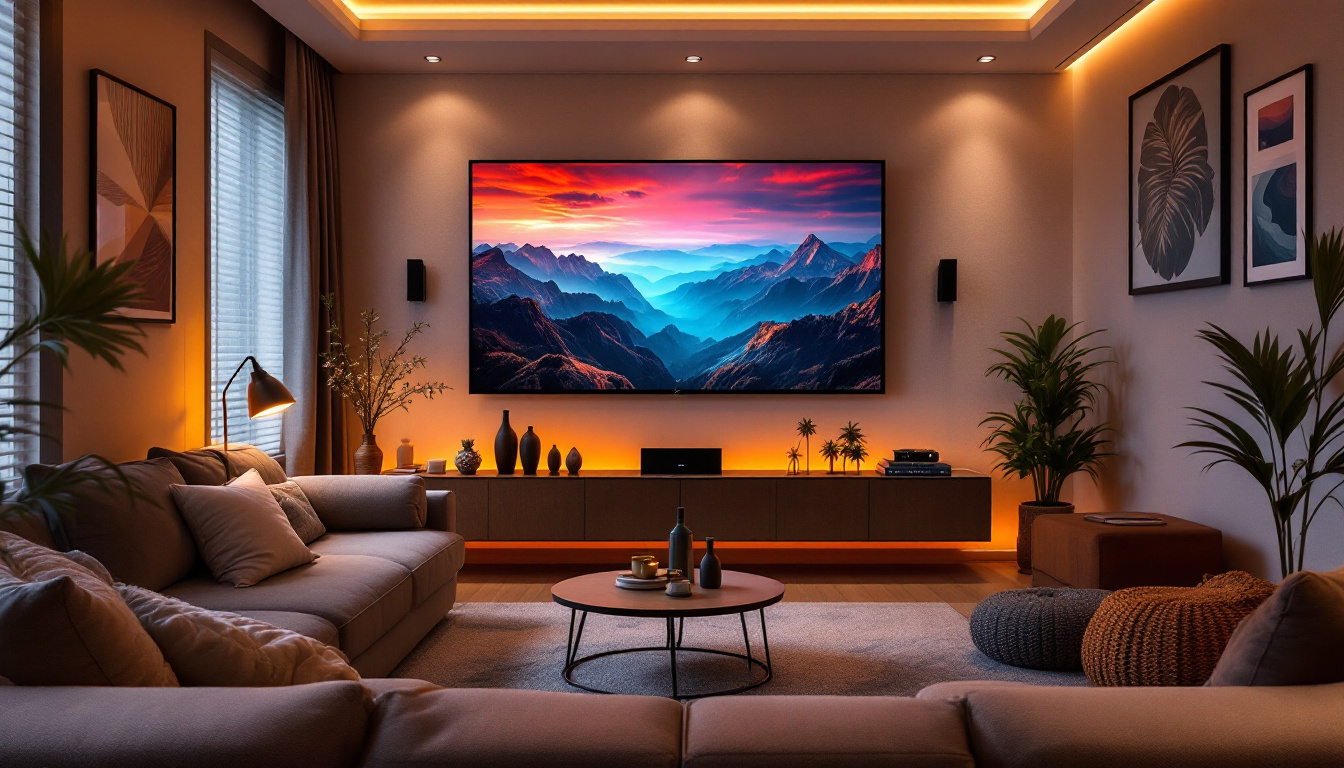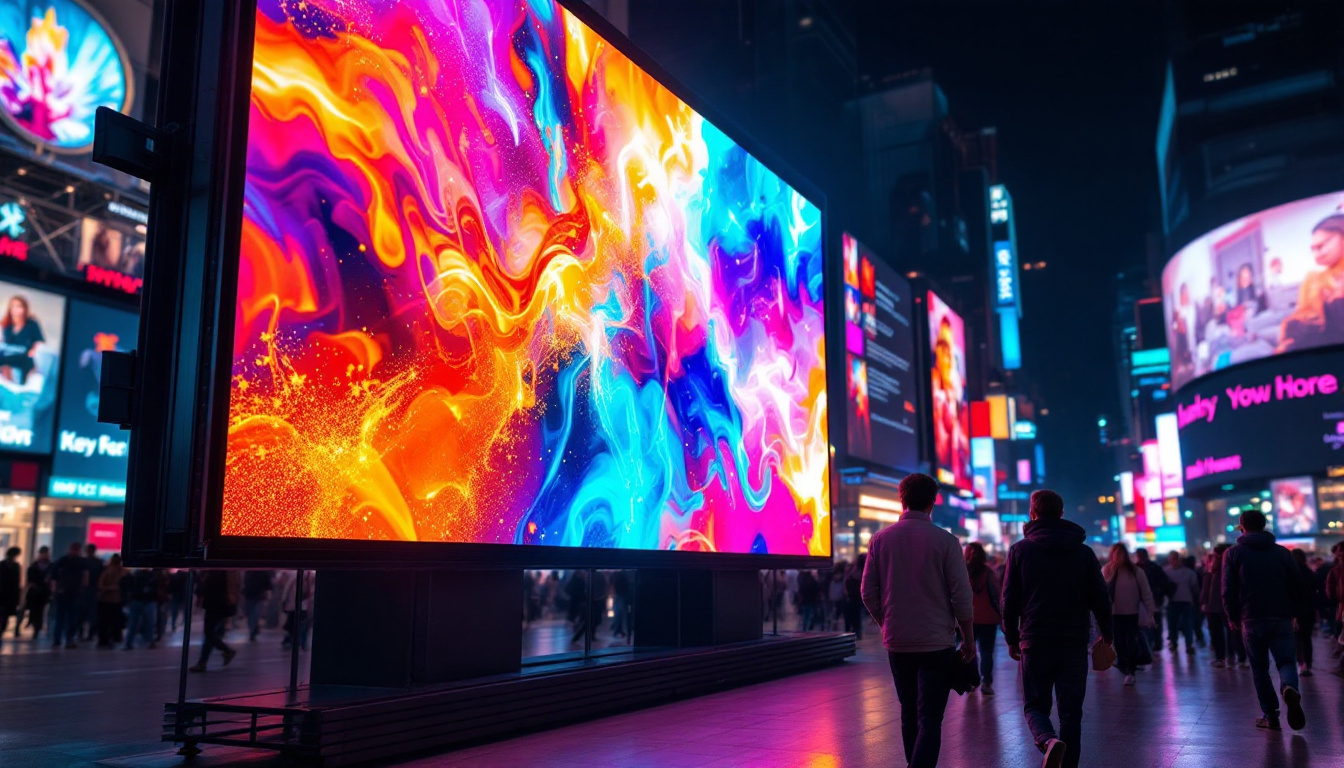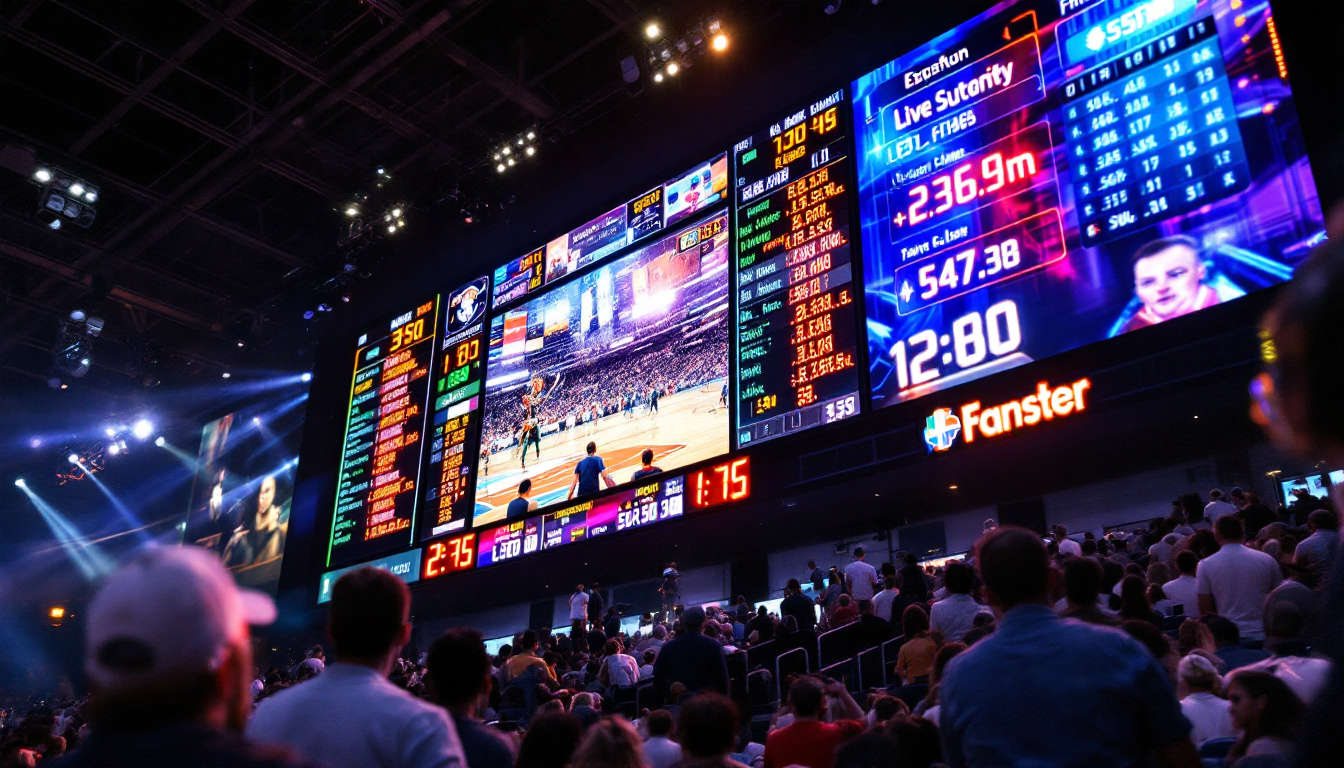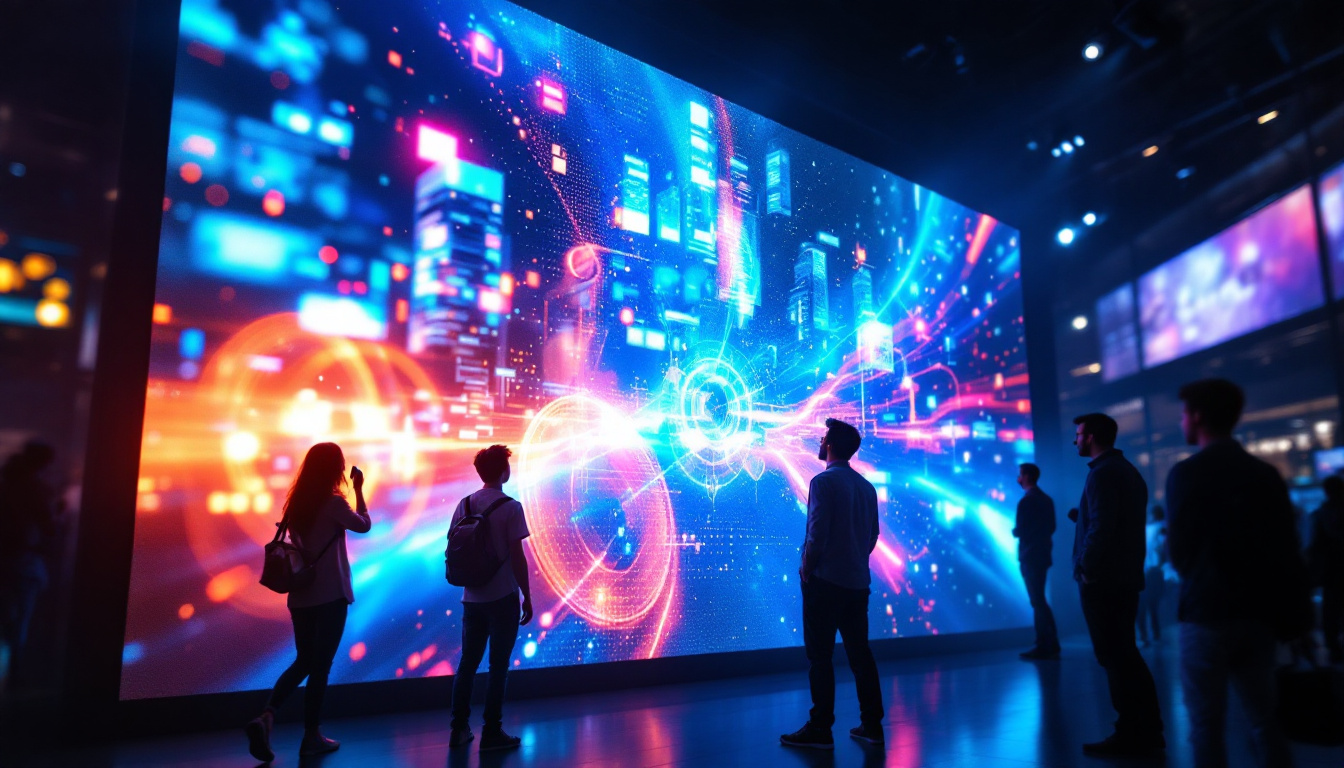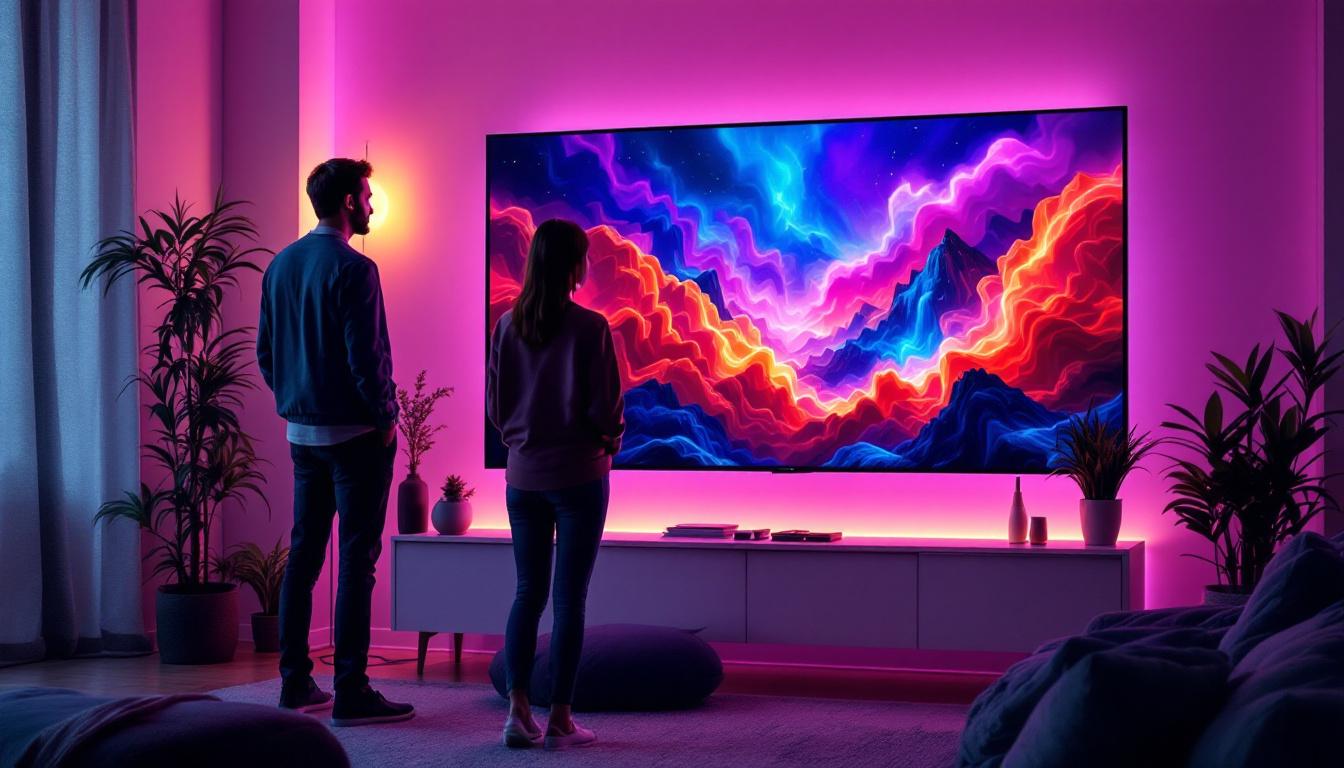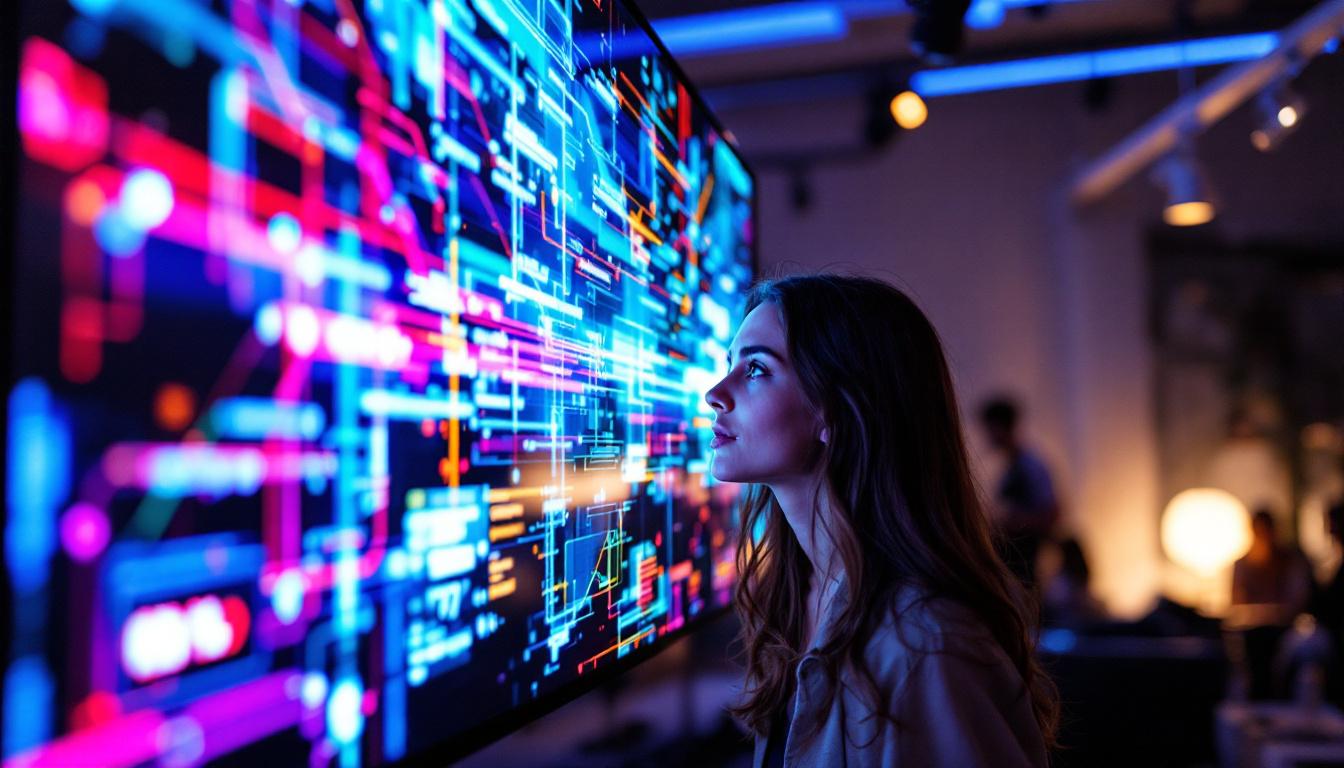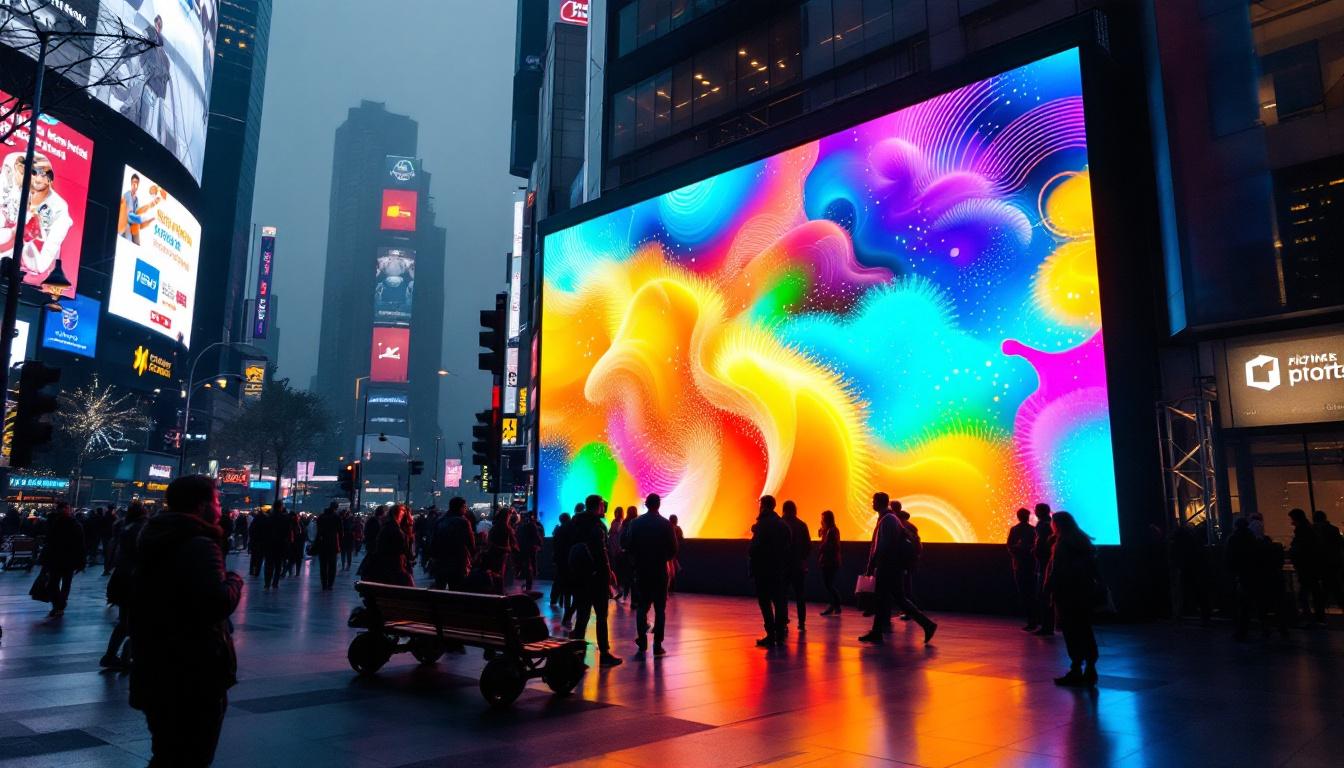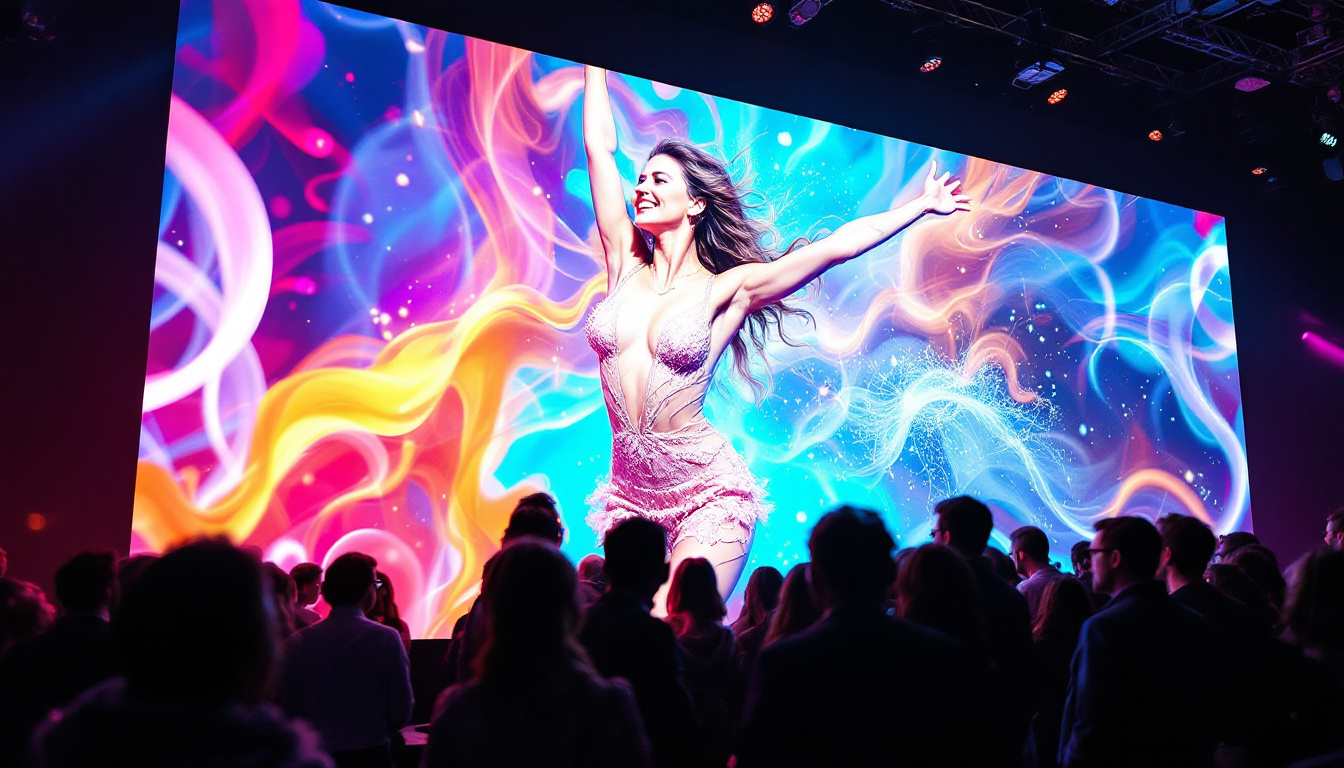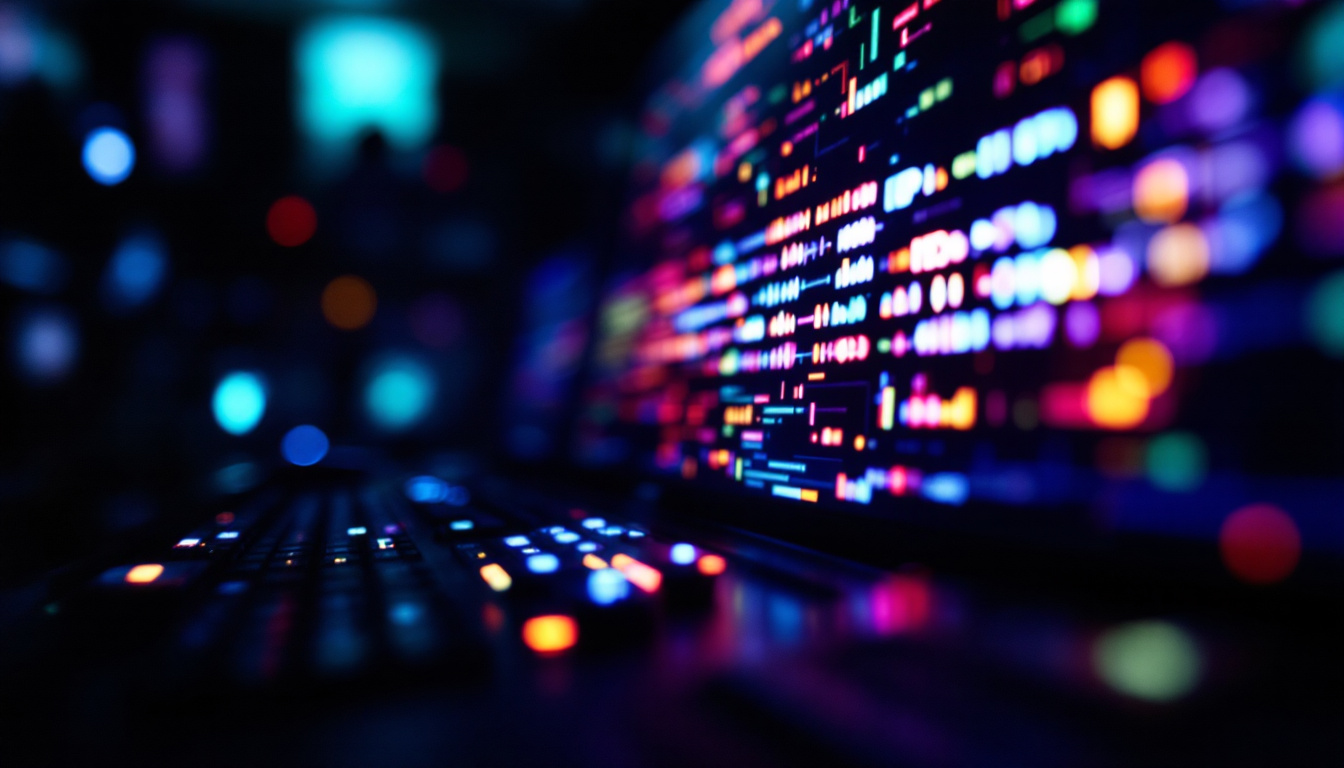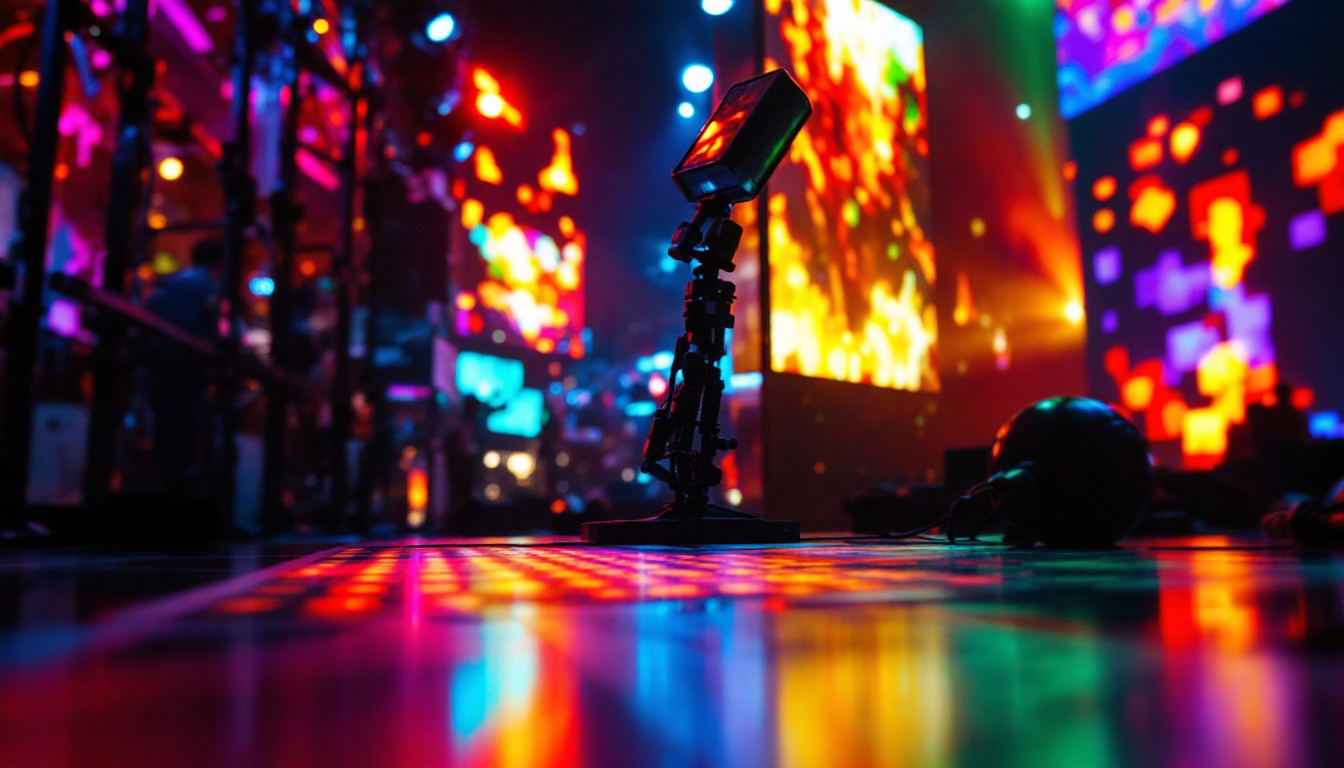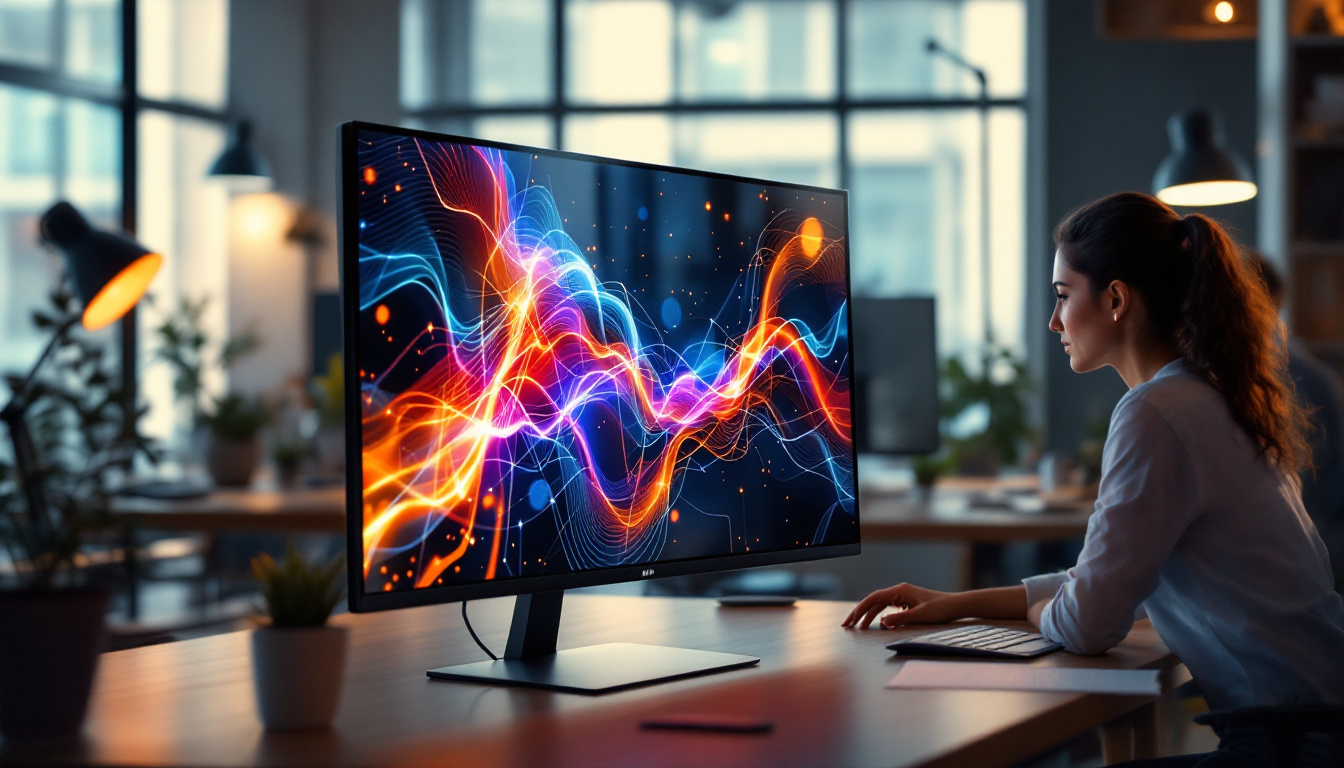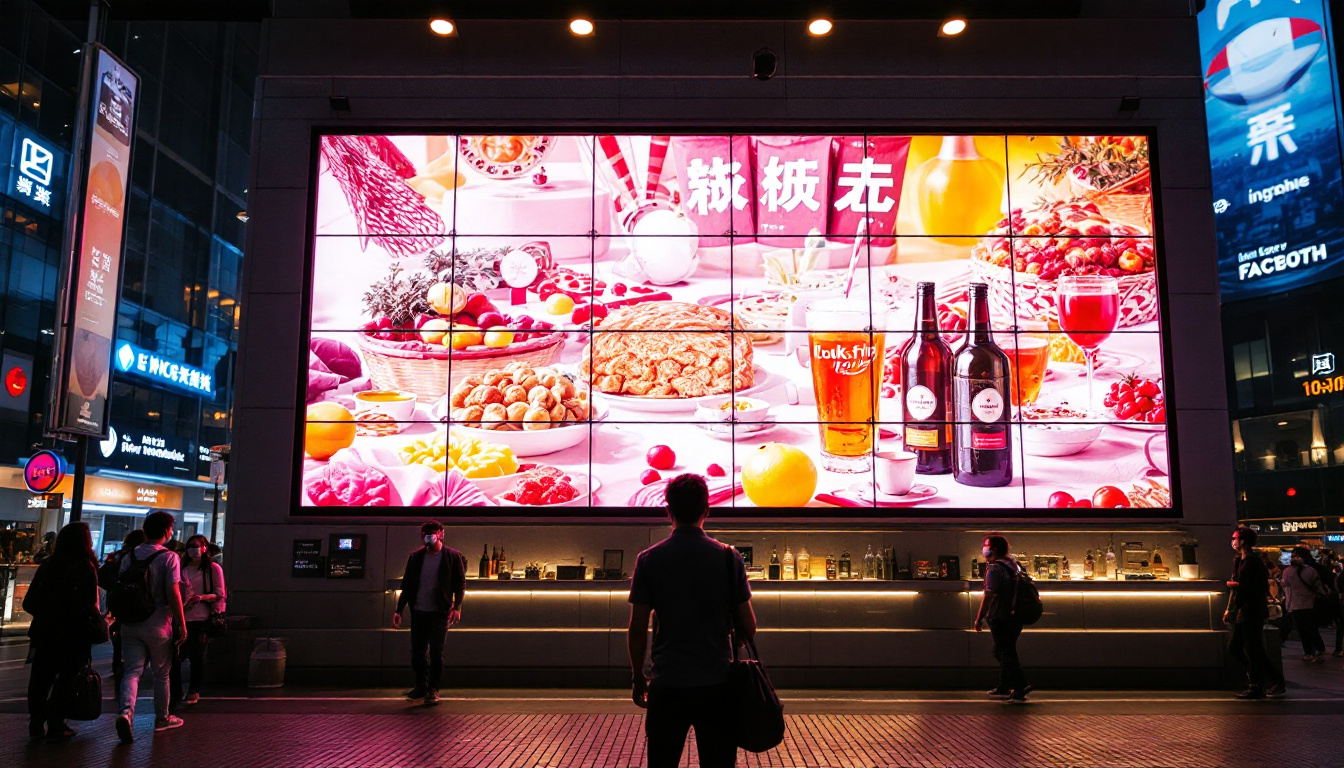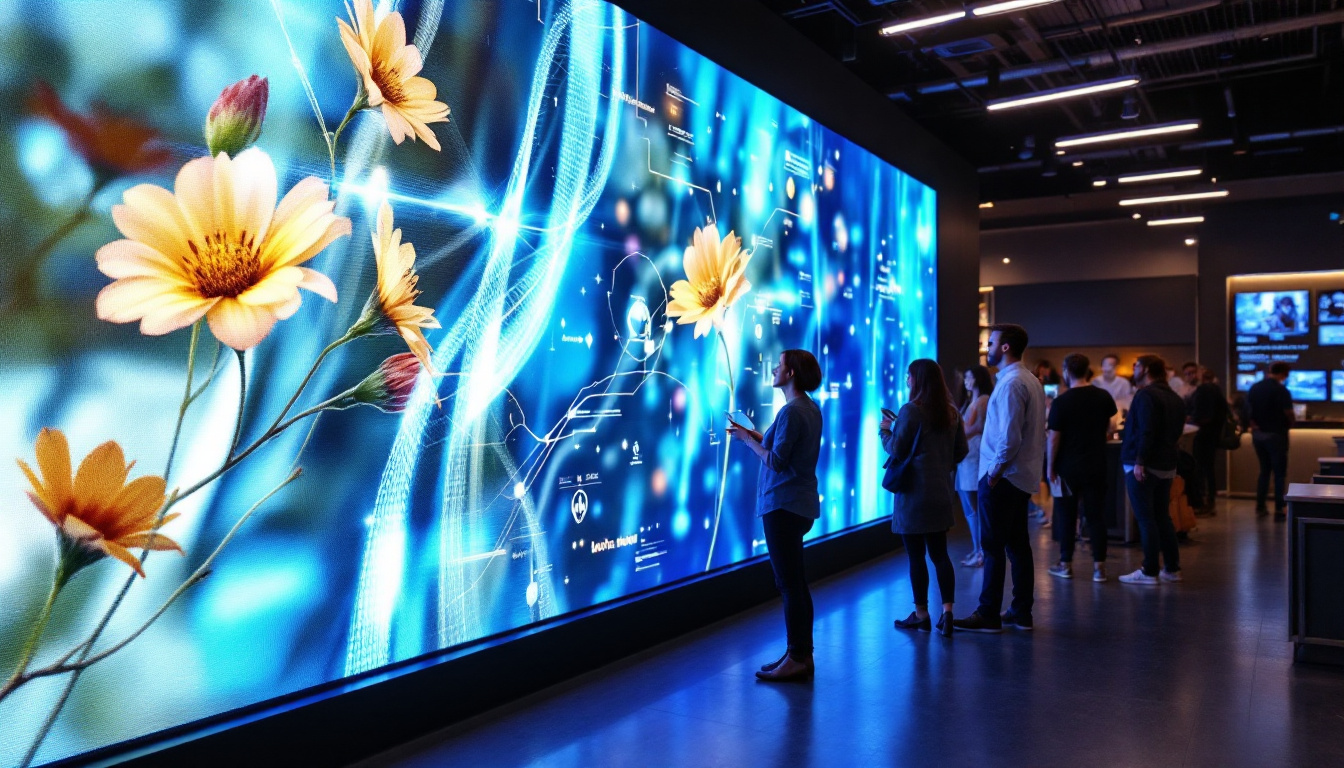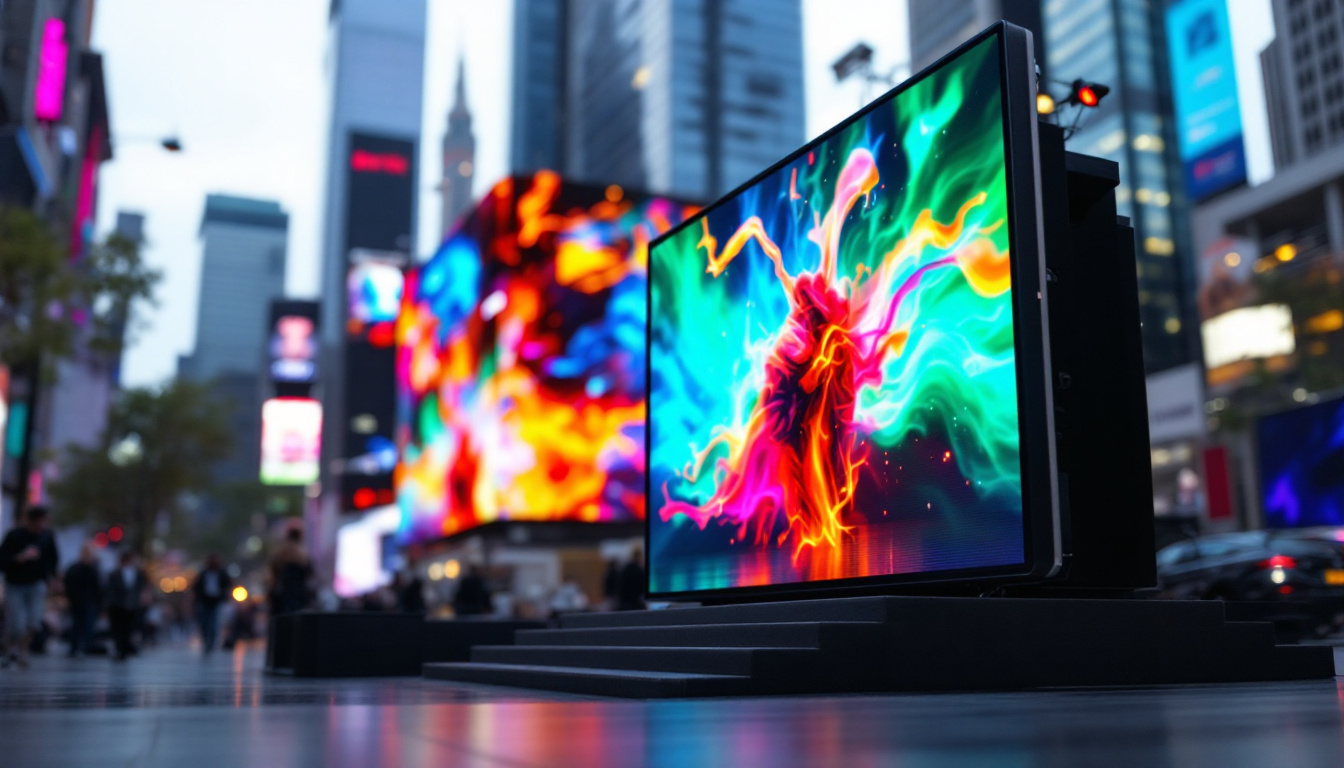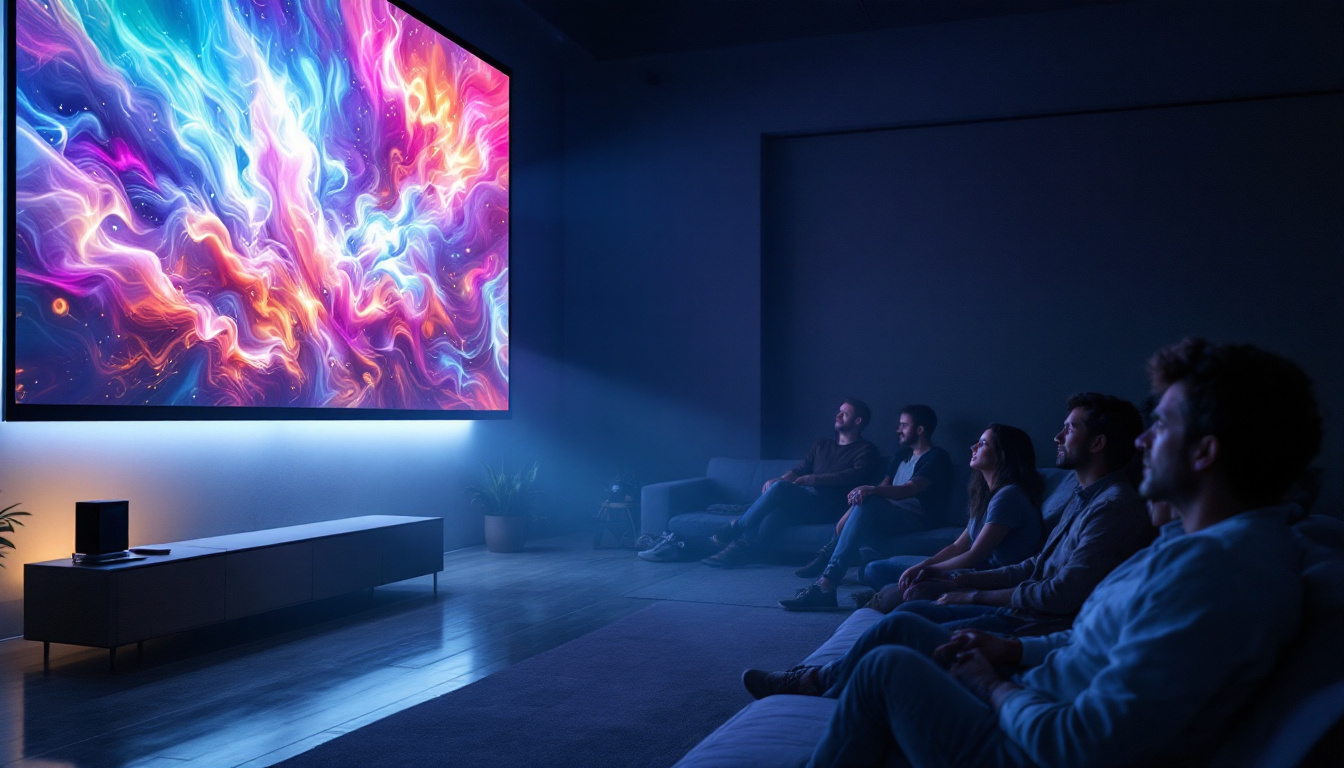In today’s digital age, LED displays have become an integral part of our visual experience. From large advertising billboards to intricate video walls in concert venues, the versatility and brilliance of LED technology have revolutionized how information is presented. This article delves into the intricacies of LED displays, exploring their components, applications, and the technology that powers them.
What is an LED Display?
An LED display is a flat panel display that uses light-emitting diodes (LEDs) as its primary light source. Unlike traditional displays that rely on liquid crystals or cathode ray tubes, LED displays offer superior brightness, color accuracy, and energy efficiency. This technology allows for vibrant visuals that can be seen clearly in various lighting conditions. The rapid evolution of LED technology has also led to thinner, lighter displays that are easier to install and integrate into various environments, making them a popular choice for both commercial and residential applications.
Furthermore, LED displays are not only energy-efficient but also have a longer lifespan compared to their predecessors. This durability makes them an environmentally friendly option, as they reduce the need for frequent replacements and waste. With advancements in technology, manufacturers are continually improving the performance of LED displays, enabling features such as higher refresh rates and improved pixel density, resulting in even sharper images and smoother motion. These enhancements have made LED displays the go-to choice for a wide range of applications, from digital signage to home theaters.
Types of LED Displays
LED displays can be categorized into several types, each serving different purposes and environments. The most common types include:
- Direct View LED Displays: These displays consist of individual LED modules that form a larger screen. They are often used for outdoor advertising and large-scale events due to their high brightness and visibility. Direct view displays can be configured in various shapes and sizes, allowing for creative installations that capture attention and convey messages effectively.
- LED Video Walls: Comprising multiple smaller screens, LED video walls create a seamless display for broadcasting video content. They are popular in control rooms, sports arenas, and entertainment venues. The modular nature of video walls allows for flexible configurations, enabling users to customize the layout according to their specific needs, whether for immersive experiences or informative displays.
- LED Backlit Displays: These displays use LEDs to illuminate the screen from behind, enhancing the brightness and contrast of LCD panels. They are commonly found in televisions and computer monitors. The backlighting technology has evolved to include features like local dimming, which improves black levels and overall picture quality, making these displays ideal for both casual viewing and professional graphic work.
In addition to these common types, there are also specialized LED displays, such as transparent LED screens that allow for innovative advertising solutions without obstructing visibility. These screens are particularly popular in retail environments, where they can showcase promotional content while still allowing customers to see the products behind them. Another emerging trend is flexible LED displays, which can be bent and shaped to fit unique spaces, opening up new possibilities for creative design in architecture and interior decor.
The Technology Behind LED Displays
The technology that powers LED displays is complex yet fascinating. At the core of every LED display lies the LED itself, a semiconductor device that emits light when an electric current passes through it. The arrangement and configuration of these LEDs determine the display’s resolution, brightness, and color quality.
Pixel Configuration
Each LED display is made up of pixels, which are the smallest units of a digital image. In an LED display, each pixel is typically composed of three sub-pixels: red, green, and blue (RGB). By adjusting the intensity of these sub-pixels, a wide spectrum of colors can be produced. The resolution of an LED display is defined by the number of pixels it contains, with higher resolutions providing more detailed images.
Brightness and Contrast
One of the standout features of LED displays is their ability to produce high brightness levels. Measured in nits, brightness is crucial for visibility, especially in outdoor settings where sunlight can wash out other display types. Additionally, LED displays offer excellent contrast ratios, allowing for deeper blacks and more vibrant colors, enhancing the overall viewing experience.
Energy Efficiency
LED technology is renowned for its energy efficiency. Compared to traditional lighting technologies, LEDs consume significantly less power while providing greater output. This efficiency not only reduces operational costs but also minimizes environmental impact, making LED displays a sustainable choice for businesses and organizations.
Applications of LED Displays
LED displays have a wide range of applications across various industries. Their adaptability and visual appeal make them suitable for numerous environments, from commercial to entertainment. Here are some notable applications:
Advertising and Marketing
One of the most prominent uses of LED displays is in advertising. Digital billboards and signage leverage the vivid colors and dynamic content capabilities of LED technology to capture the attention of passersby. Advertisers can easily update content in real-time, allowing for targeted marketing campaigns that can adapt to different audiences and times of day.
Entertainment and Events
In the entertainment industry, LED displays are ubiquitous. Concerts, festivals, and sporting events utilize large LED screens to enhance the audience’s experience. These displays can showcase live feeds, graphics, and animations, creating an immersive environment that engages viewers. Additionally, LED technology has made its way into theaters and cinemas, providing brighter and more vibrant visuals than traditional projection methods.
Corporate and Control Room Use
LED displays are also essential in corporate settings, particularly in control rooms and monitoring stations. Large video walls allow teams to visualize data, monitor operations, and respond to incidents in real-time. The ability to customize content and layouts makes LED displays an invaluable tool for effective communication and decision-making.
Advantages of LED Displays
The advantages of LED displays extend beyond their visual appeal. They offer a multitude of benefits that make them a preferred choice for various applications.
Longevity and Durability
LED displays are known for their long lifespan, often exceeding 100,000 hours of operation. This durability reduces the need for frequent replacements, making them a cost-effective investment in the long run. Furthermore, LED technology is more resistant to shock and vibration compared to traditional displays, making them ideal for high-traffic environments.
Versatility in Design
Another significant advantage of LED displays is their versatility in design. They can be configured in various shapes and sizes, allowing for creative installations that can fit any space. Whether it’s a curved screen for an immersive experience or a massive outdoor billboard, the design possibilities are virtually limitless.
Low Maintenance Costs
Maintaining LED displays is generally less demanding than other display technologies. With fewer components that can fail and a robust design, the maintenance costs are typically lower. Additionally, the energy efficiency of LEDs contributes to reduced operational expenses over time.
Challenges and Considerations
While LED displays offer numerous advantages, they are not without challenges. Understanding these can help businesses make informed decisions when investing in this technology.
Initial Investment Cost
The initial cost of purchasing and installing LED displays can be higher than traditional display technologies. However, this upfront investment is often offset by the long-term savings in maintenance and energy costs. Organizations must weigh these factors when considering their budget and return on investment.
Viewing Angles and Distance
Another consideration is the viewing angle and distance. LED displays can exhibit color and brightness variations when viewed from different angles. It is essential to select the right pixel pitch and display configuration based on the intended viewing distance to ensure optimal performance.
Environmental Factors
For outdoor installations, environmental factors such as weather conditions must be taken into account. While many LED displays are designed to withstand harsh conditions, ensuring proper protection against elements like rain, snow, and extreme temperatures is crucial for longevity and performance.
Future Trends in LED Display Technology
The LED display industry continues to evolve, driven by technological advancements and changing consumer demands. Several trends are shaping the future of LED displays.
MicroLED Technology
MicroLED is an emerging technology that promises even greater performance than traditional LED displays. MicroLED panels consist of tiny, individual LEDs that can be arranged to create high-resolution images with superior color accuracy and brightness. This technology is expected to lead to thinner, lighter displays with enhanced flexibility.
Integration with Smart Technology
As smart technology becomes increasingly prevalent, LED displays are also integrating with IoT (Internet of Things) systems. This integration allows for real-time data updates, remote management, and enhanced interactivity, providing users with a more dynamic and engaging experience.
Sustainability Initiatives
With growing awareness of environmental issues, the LED display industry is focusing on sustainability. Manufacturers are developing eco-friendly materials and production processes, as well as promoting recycling programs for old displays. This shift towards sustainability is not only beneficial for the planet but also aligns with consumer preferences for environmentally responsible products.
Conclusion
LED displays have transformed the way information is communicated and experienced in various settings. Their vibrant visuals, energy efficiency, and versatility make them an attractive option for businesses and organizations across industries. As technology continues to advance, LED displays will undoubtedly play an even more significant role in shaping our visual landscape.
Understanding the components, advantages, and challenges of LED displays is essential for making informed decisions about their use. With the right approach, businesses can leverage this technology to enhance their marketing efforts, improve communication, and create memorable experiences for their audiences.
As the future unfolds, LED displays will continue to evolve, offering exciting possibilities for innovation and creativity in visual communication.
Illuminate Your Space with LumenMatrix
Ready to elevate your visual experience with the latest in LED display technology? LumenMatrix is at the forefront of innovation, offering a diverse range of LED display solutions tailored to your needs. From captivating Indoor LED Walls to dynamic Outdoor LED Displays, and from versatile Vehicle LED Displays to sleek LED Poster Displays, our products are designed to revolutionize your visual communication. Discover how LumenMatrix can enhance your brand visibility and create immersive visual experiences that resonate with your audience. Check out LumenMatrix LED Display Solutions today and step into the future of digital signage.

